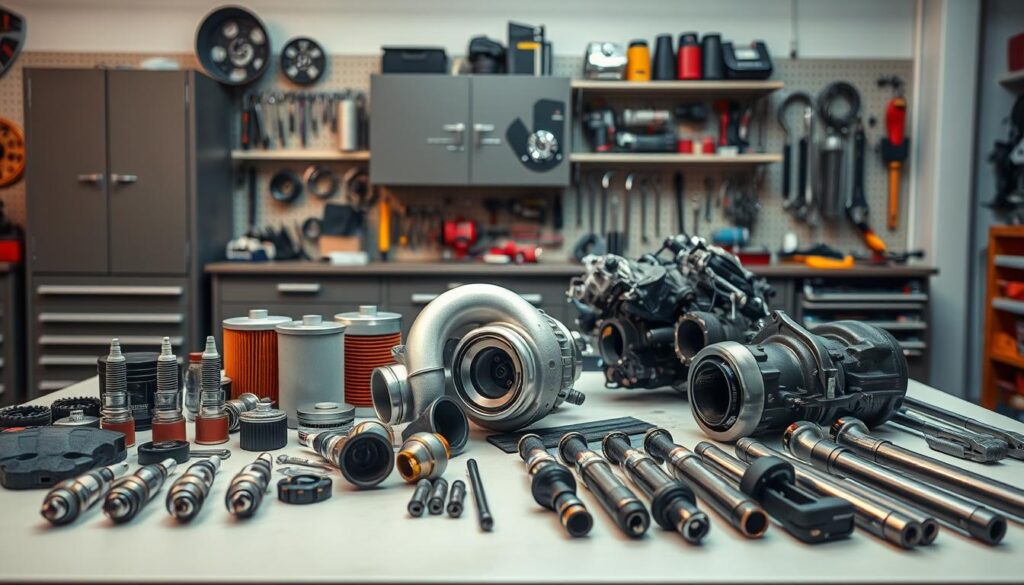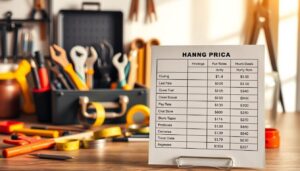Are you tired of paying premium prices for car parts? Can you really trust the quality of spares sourced from unknown suppliers? In the UK’s vast automotive parts market, finding reliable components at competitive prices is crucial for businesses and serious DIY enthusiasts alike.
This comprehensive guide will walk you through the process of sourcing premium car parts at trade prices, helping you to reduce maintenance costs or improve your profit margins. You’ll gain insights into the UK automotive parts market structure and learn how to evaluate part quality effectively.
Key Takeaways
- Understand the UK automotive parts market structure and its distribution channels.
- Learn how to find and evaluate reliable suppliers for quality car parts.
- Discover strategies to source premium parts at competitive trade prices.
- Improve your profit margins or reduce maintenance costs with quality spares.
- Navigate warranty terms and conditions for car parts effectively.
Understanding the UK Automotive Parts Market
Understanding the intricacies of the UK automotive parts market is crucial for making informed purchasing decisions. The market’s complexity can be broken down into several key areas.
The Size and Scope of the Industry
The UK automotive parts industry is vast and multifaceted, with a significant impact on the country’s economy. It encompasses a wide range of components and services.
Key Players and Distribution Channels
Key players in the market include manufacturers, distributors, and retailers. Distribution channels vary, with some suppliers selling directly to consumers, while others operate through intermediaries.
The Difference Between Retail and Trade Pricing
The pricing structure in the UK automotive parts market typically displays both VAT-inclusive retail prices and ex-VAT trade prices. Trade prices are generally 16-20% lower.
Several factors contribute to the difference between retail and trade pricing:
- Retail pricing includes markups to cover overheads, marketing, and profit margins for intermediaries.
- Trade pricing eliminates many of these costs, offering prices closer to the wholesale value.
- Understanding VAT applications is essential for calculating the true cost difference.
- Trade pricing often requires minimum order quantities or trade accounts.
- Price differentials vary depending on the part type.
To illustrate the pricing differences, consider the following table:
| Pricing Type | VAT Status | Typical Discount |
|---|---|---|
| Retail | Inclusive | 0% |
| Trade | Ex-VAT | 16-20% |
Benefits of Sourcing Quality Parts at Trade Prices
The advantages of sourcing quality parts at trade prices are multifaceted and far-reaching. By leveraging trade prices, you can significantly enhance your business operations and profitability.
Cost Savings and Profit Margins
Sourcing quality parts at trade prices allows you to reduce your costs and improve your profit margins. Over the years, these savings can accumulate, providing a substantial boost to your business’s financial health. You can achieve this by establishing strong relationships with your suppliers.
Access to Premium Brands and Components
Trade pricing often grants you access to premium brands and components that might otherwise be out of your budget. This way, you can offer high-quality products to your customers, enhancing your reputation and potentially increasing sales.
Building Sustainable Business Relationships
Establishing long-term relationships with parts suppliers can lead to numerous benefits, including preferential treatment, exclusive offers, and priority access during parts shortages. These relationships provide valuable industry insights and technical support, going beyond simple transactions. Many suppliers offer additional services, such as technical training or marketing support, to their regular trade customers.
| Benefits | Description |
|---|---|
| Preferential Treatment | Loyal trade customers often receive priority during parts shortages or for special orders. |
| Industry Insights | Business relationships with suppliers provide valuable industry insights and technical support. |
| Additional Services | Many suppliers offer technical training or marketing support to their regular trade customers. |
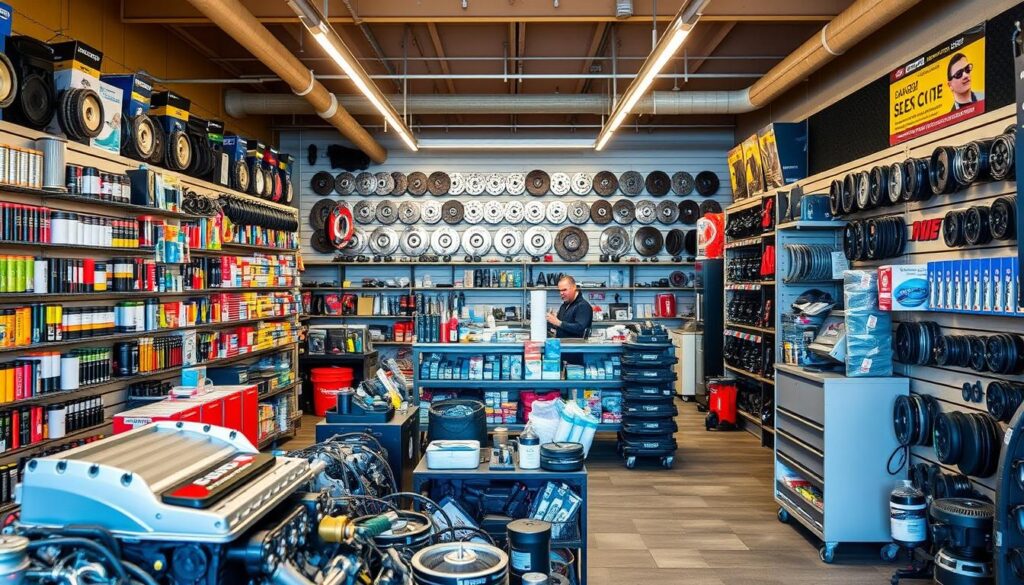
How to Qualify for Trade Pricing

Qualifying for trade pricing is a crucial step for businesses looking to source quality car parts at competitive prices in the UK. To achieve this, you must meet specific requirements set by suppliers.
Business Registration Requirements
You need to register your business to qualify for trade pricing. Suppliers typically require verification of your business credentials.
Volume Purchase Considerations
Suppliers often offer trade pricing to businesses that commit to purchasing a certain volume of parts. This demonstrates your business’s potential value to the supplier.
Trade Accounts and Application Processes
Setting up a trade account involves an application process that verifies your business credentials and credit status. You’ll need to complete forms detailing your business operations and expected purchase volumes. Many suppliers offer online applications through their website, streamlining the process. Maintaining a good credit rating is crucial as credit checks are standard for trade accounts with payment terms. Once approved, you’ll receive login credentials for trade-only sections where trade pricing is displayed, and you’ll be able to make purchases without VAT complications if you’re registered.
- Setting up trade accounts typically involves an application process that verifies your business credentials and credit status.
- You’ll need to complete application forms that capture details about your business operations and expected purchase volumes.
- Many suppliers now offer online application processes through their websites, streamlining the account setup procedure.
- Credit checks are standard for trade accounts with payment terms, so maintaining a good business credit rating is important.
- Once approved, you’ll receive login credentials for trade-only sections of supplier websites where trade pricing is displayed.
Finding Reliable Parts Suppliers in the UK
Sourcing quality parts at trade prices begins with identifying reliable suppliers in the UK. To achieve this, you can explore various channels that offer a range of benefits.
Established Distributors with Industry Experience
Established distributors bring valuable industry experience and a wide range of quality parts. They often have strong relationships with brands, ensuring authenticity and reliability.
Online Marketplaces and Trade Platforms
Online marketplaces, such as eBay, have become significant players in the UK’s parts supply market. eBay estimates that UK drivers saved almost £100 million buying recycled parts instead of new ones via its website last year. Their ‘Certified Recycled’ spare parts portal is a notable development, offering spares with assured quality.
Manufacturer Direct Relationships
Developing direct relationships with manufacturers can be highly beneficial. You’ll gain access to the full range of a manufacturer’s components, including specialist items. This direct connection often provides early access to new product releases and technical information, enhancing your technical capabilities.
Evaluating Parts Quality and Standards
When sourcing quality parts, understanding the grading systems and standards is crucial for making informed decisions. The UK automotive parts market offers a wide range of components, but not all are created equal. To ensure you’re getting the best parts for your business, it’s essential to grasp the various quality grading systems in place.
Understanding Quality Grading Systems
Quality grading systems help you identify the level of quality and reliability of automotive parts. eBay’s Certified Recycled parts, for instance, must adhere to rigorous standards including traceability of origin, quality and safety grading, functionality testing, and proper cleaning and refurbishment. Understanding these grading systems enables you to make informed purchasing decisions.
OEM vs Aftermarket Considerations
When evaluating parts quality, it’s crucial to consider the differences between Original Equipment Manufacturer (OEM) and aftermarket parts. OEM parts are designed to meet the manufacturer’s original specifications, while aftermarket parts are produced by third-party suppliers. While OEM parts are generally considered to be of higher quality, some aftermarket parts can offer comparable quality at a lower price.
Certification and Compliance Markers
Certification marks provide assurance that parts meet specific quality and safety standards set by regulatory bodies or industry associations. Key compliance markers include the ‘E’ mark for components that meet European safety standards. These certification marks are particularly important for safety-critical components like braking systems and structural parts.
| Certification Mark | Description | Relevance |
|---|---|---|
| E Mark | European safety standards compliance | Safety-critical components |
| ISO 9001 | Quality management system certification | General quality assurance |
| ECE Mark | Economic Commission for Europe regulations compliance | Automotive parts and accessories |
The Value of Warranties and Guarantees
Warranties and guarantees play a significant role in ensuring the quality and reliability of the parts you source. They provide a safeguard against defective products and offer peace of mind for your business.
Standard Warranty Terms in the Parts Industry
Typically, suppliers offer standard warranty terms that cover parts for a specified period. Understanding these terms is crucial to making informed purchasing decisions.
Extended Warranty Options
Some suppliers offer extended warranty options for additional protection. These options can be beneficial for critical components or for businesses that require extended support.
Making Warranty Claims and Returns
Efficient warranty claim processes are a hallmark of reputable suppliers. You’ll want to understand the specific documentation required to support returns and claims. Many suppliers now offer streamlined online returns processes, minimizing downtime when dealing with faulty components.
Exploring the Recycled Parts Market

Buying certified recycled car parts in the UK can be a smart move, offering significant savings without compromising on quality. The recycled parts market provides consumers with a range of options for replacing vehicle components.
eBay’s Certified Recycled Programme
eBay’s Certified Recycled programme offers a range of used car parts that have been thoroughly inspected and certified. This programme provides additional protections for consumers, including clear warranty terms and the backing of the Chartered Trading Standards Institute.
Quality Grading of Second-Hand Parts
When buying used car parts, understanding the quality grading system is crucial. This helps you make an informed decision and ensures that you receive a part that meets your needs. Quality grading considers factors such as the part’s condition, age, and original equipment manufacturer (OEM) specifications.
Consumer Protections When Buying Used
As a consumer, you have certain rights when buying used parts from businesses. These rights are protected under consumer protection laws, which provide similar protections as when buying new components. It’s essential to understand your rights and the warranty terms when purchasing used parts.
Essential Car Parts Worth Investing In
Maintaining your vehicle with premium car parts is a worthwhile investment. As cars become increasingly complex, certain components stand out as essential for reliability and performance.
Engine Components and Fluids
Investing in high-quality engine components and fluids is vital for your car’s longevity. Premium engine oils and filters, for instance, can significantly improve engine performance and fuel efficiency. When selecting engine parts, consider the manufacturer’s specifications and choose reputable brands.
Braking Systems and Safety Parts
Your vehicle’s braking system is critical for safety on the road. High-quality brake pads and discs can reduce stopping distances and prevent accidents. Look for parts that meet or exceed OEM standards for optimal performance.
Electrical Components and Batteries
As vehicles become more electronically complex, electrical components and batteries play a crucial role. Yuasa car batteries, for example, offer superior cold-cranking performance and longer service life. Understanding your vehicle’s electrical load requirements helps in selecting the right components and car batteries.
Car Care Products at Trade Prices
Accessing car care products at trade prices is a strategic move for businesses. You can significantly reduce your operational costs while maintaining high-quality services.
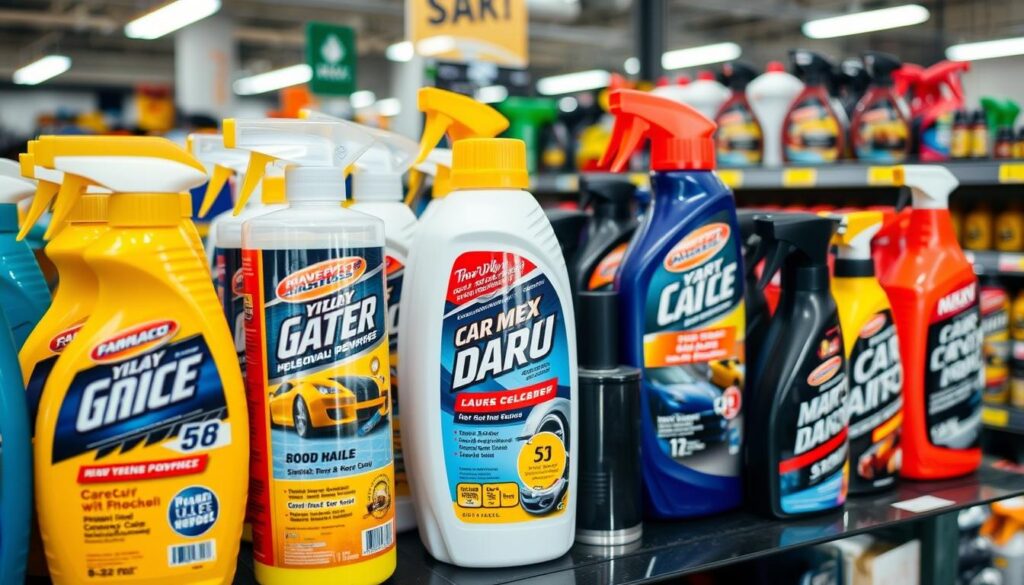
Cleaning and Maintenance Supplies
You can find a range of cleaning and maintenance supplies at trade prices, including high-quality cleaning agents and microfibre cloths. These products help maintain your customers’ vehicles in top condition.
Seasonal Products
Seasonal products like de-icers and screen wash are available at discounted trade prices. Stocking up on these products ensures you’re prepared for seasonal demands.
Workshop Tools and Equipment
Investing in quality workshop tools and equipment is crucial for any car maintenance business. Trade pricing makes it more affordable to upgrade your toolkit with professional-grade items like the “Cougar000225 -2 Tonne Car Ramps” available at £31.82 ex VAT. You can explore more products on Carspares Ltd.
Navigating VAT and Pricing Structures
To make informed purchasing decisions, it’s vital to grasp how VAT applications and pricing structures impact your bottom line. Understanding these elements can help you navigate the complex world of trade pricing for automotive parts.
Understanding VAT Applications on Parts
VAT can significantly affect the cost of parts. Typically, trade prices are quoted ex-VAT, while retail prices include VAT. This distinction is crucial for businesses to understand their actual costs.
Bulk Purchase Discounts
Buying in bulk often leads to discounts. Suppliers offer reduced prices for larger orders, which can lower your overall costs. Ensure you’re comparing prices based on the total cost of acquisition, including any delivery charges.
Price Comparison Strategies
Effective price comparison requires more than just looking at the sticker price. You need to consider the total cost, including delivery and handling fees. Digital tools can help automate comparisons across suppliers, saving time and identifying the best deals.
Digital Tools for Efficient Parts Sourcing
Digital tools have revolutionised the way businesses source car parts in the UK, offering a more streamlined and efficient process. These tools enable you to quickly identify and procure the necessary parts, reducing downtime and improving overall productivity.
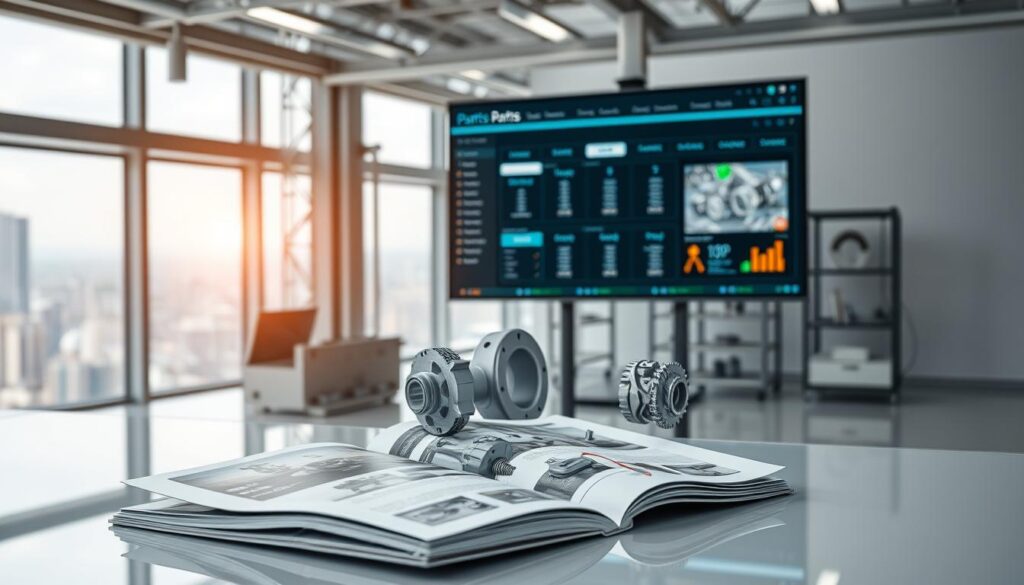
Vehicle Registration Lookup Systems
Vehicle registration lookup systems allow you to search for parts by entering your vehicle’s registration number, ensuring compatibility and accuracy. This feature is particularly useful for businesses dealing with multiple vehicle makes and models.
Parts Compatibility Databases
Parts compatibility databases provide comprehensive information on parts compatibility, helping you make informed purchasing decisions. These databases are regularly updated to reflect the latest parts releases and revisions.
Inventory Management Solutions
Inventory management solutions help optimise parts stocking levels, reducing both stockouts and excess inventory costs. You’ll find these systems particularly valuable for managing fast-moving consumable parts. Key benefits include:
- Understanding usage patterns through data analysis to establish minimum stock levels and reorder points.
- Integration between inventory systems and supplier ordering platforms to streamline the replenishment process.
- Advanced inventory management solutions can forecast seasonal demand variations, helping plan purchases to coincide with the best pricing opportunities.
Common Pitfalls to Avoid When Sourcing Parts
When sourcing automotive parts, it’s crucial to be aware of potential pitfalls that can impact your business. Being informed helps you navigate the complex landscape of parts sourcing, ensuring you secure quality components at competitive prices.
Counterfeit Parts and How to Spot Them
Counterfeit parts are a significant risk in the automotive industry. To avoid them, look for genuine certification and be wary of prices that are significantly lower than market average. Established brands typically have robust anti-counterfeiting measures in place.

Hidden Costs and Delivery Charges
Be mindful of hidden costs and delivery charges when sourcing parts. Suppliers may advertise competitive pricing, but additional fees can inflate the total cost. Check if your supplier offers free UK mainland delivery on orders over £30, a valuable feature for reducing overall expenditure.
Poor Quality Control Issues
Poor quality control in parts manufacturing can lead to premature failures and customer dissatisfaction. To mitigate this, understand the quality control certifications relevant to different component types. Building relationships with suppliers who demonstrate consistent quality control reduces operational disruptions caused by component failures.
Conclusion: Building a Sustainable Parts Sourcing Strategy
As you navigate the complex UK automotive parts market, developing a sustainable sourcing strategy becomes crucial for your business’s success. This involves balancing quality, cost, availability, and supplier reliability considerations.
To achieve this balance, you’ll benefit from establishing relationships with multiple complementary suppliers rather than relying on a single source. Understanding which components benefit most from premium quality and where standard alternatives provide adequate performance helps optimise your spending on car parts.
Regular review of your sourcing strategy ensures it evolves with changing market conditions and business requirements. The most successful approaches combine systematic processes with the flexibility to adapt to specific situations, allowing you to find car parts at competitive trade prices.
By leveraging digital tools while maintaining personal supplier relationships, you create a robust sourcing ecosystem that delivers consistent value. Your parts sourcing strategy should align with your overall business positioning, whether focused on premium quality or competitive pricing.
